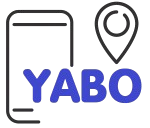Meals to go Business

Type: Service and Trading
If you love making delicious meals and want to share your culinary talents with others, starting a meal-to-go business is a fantastic venture.
Key Products/Services:
Ready-to-eat meals that customers can grab on the go. This includes a variety of options for breakfast, lunch, and dinner.
Technology Considerations:
Utilize a simple online ordering system and promote your business through social media platforms. Use basic communication tools like a phone for orders and updates.
Market for the Product:
Busy individuals, office workers, students, and families looking for convenient and tasty meal options. You can also target local events, offices, and gatherings.
Key Inputs into the Business:
Fresh ingredients, packaging materials, cooking equipment, and a reliable means of transportation for deliveries.
Product Preparation Process:
Cook and prepare meals in advance, ensuring they are delicious and ready to go. Package them securely for easy handling.
Quality Considerations:
Maintain high standards of cleanliness, use fresh and quality ingredients, and pay attention to customer feedback for continuous improvement.
Cost of Investment:
Cooking Equipment:
Pots, Pans, Utensils
Estimated Price: KES 5,000 to KES 10,000
Packaging Materials:
Containers, Wrappers, Labels
Estimated Price: KES 8,000 – KES 15,000
Initial Marketing:
Business Cards, Flyers, Social Media Promotion
Estimated Price: KES 5,000 – KES 10,000
Kitchen Infrastructure:
Shelving, Storage Containers
Estimated Price: KES 5,000 – KES 8,000
Transportation:
Reliable Vehicle for Deliveries (motorbike or Tuktuk)
Estimated Price: KES 20,000 – KES 50,000
Miscellaneous Costs:
Cleaning Supplies, Initial Ingredients, Website (if applicable)
Estimated Price: KES 2,000 – KES 7,000
Total Estimated Cost ranges from KES 45,000 – KES 100,000
Required Operational Infrastructure:
A well-equipped kitchen, storage space for ingredients, and a reliable vehicle for transportation.
Most Suitable or Viable Location:
Operate from home initially to keep costs low. Look into local regulations to ensure compliance.
Potential Sources of Investment Capital:
Consider using personal savings to start. Explore small business loans or partnerships with local investors for additional capital.
Requirements for Effective Management:
Plan a diverse and appealing menu, manage inventory efficiently, and ensure timely deliveries. Offer promotions to attract more customers.
Role of Mobile Phones and ICT:
Utilize your phone for orders, social media for promotion, and basic communication tools to keep customers informed.
Statutory Regulations and Licenses:
Ensure compliance with local health and safety regulations and acquire necessary business licenses. This may include;
Business Name or Company Registration
City County Business Permit
Food Hygiene Licenses
Fire Safety Certificate
KRA PIN
Pricing:
Set competitive prices based on market rates and consider bundle offers or loyalty programs for repeat customers.
Profitability:
Expect profitability through volume sales. For example, selling 50 meals a day at an average of KES 300 each could result in a monthly profit of KES 75,000.
Next Steps to Take:
Launch a simple online ordering platform, promote your business through social media, and focus on providing excellent customer service. Explore partnerships with local offices or events to expand your reach.
Example Online Ordering Platforms:
Wix: Offers a user-friendly website builder with e-commerce capabilities.
Square: Provides tools for online ordering and payment processing.
Shopify: An e-commerce platform suitable for setting up an online store.
Zomato: A popular platform that allows restaurants to manage online orders.

